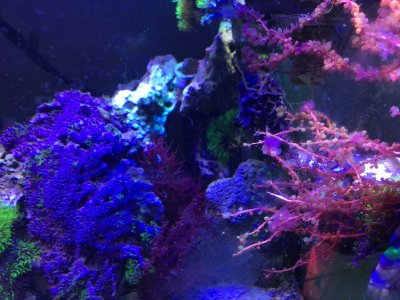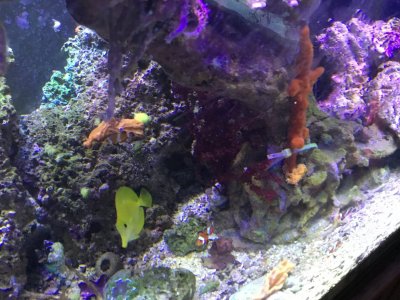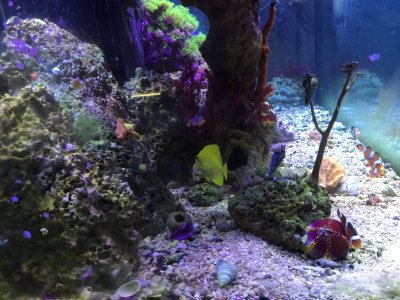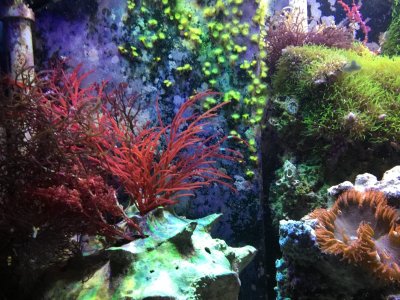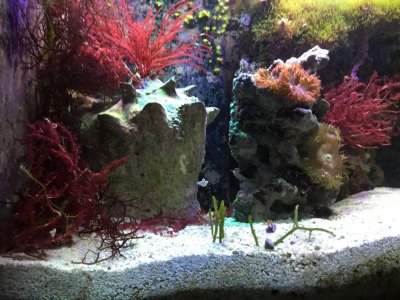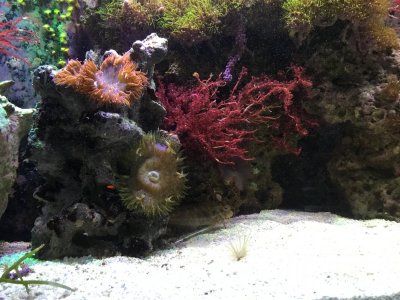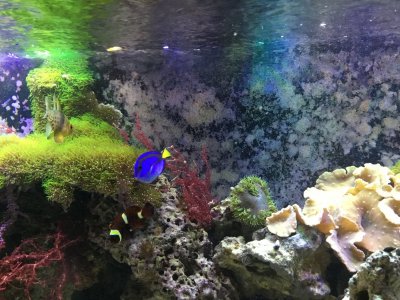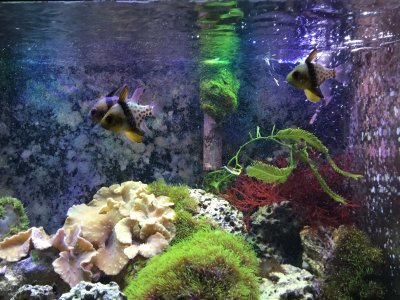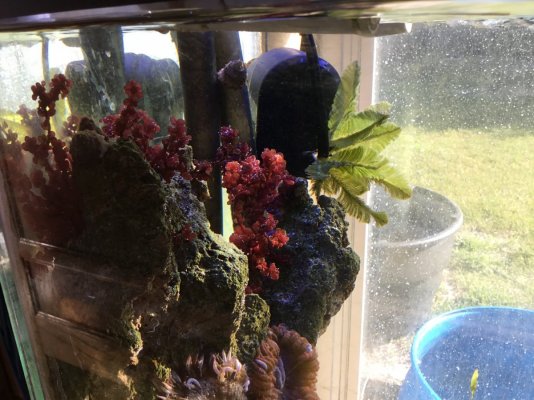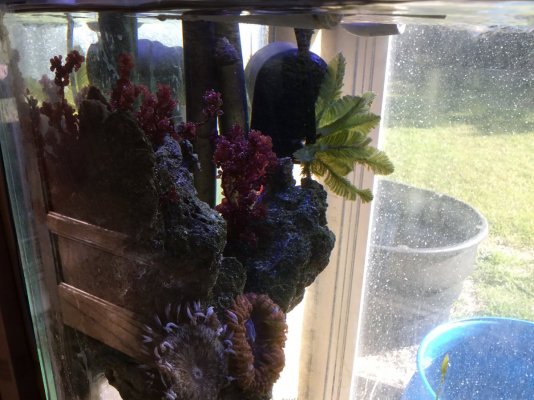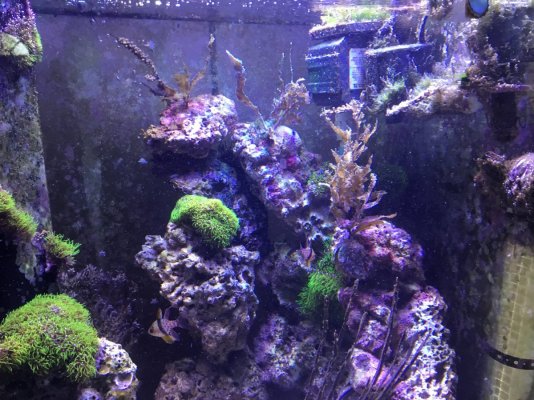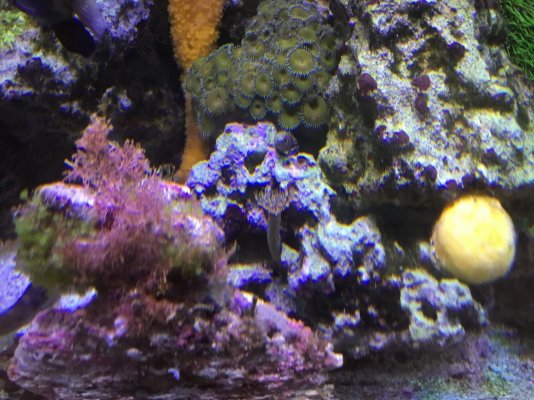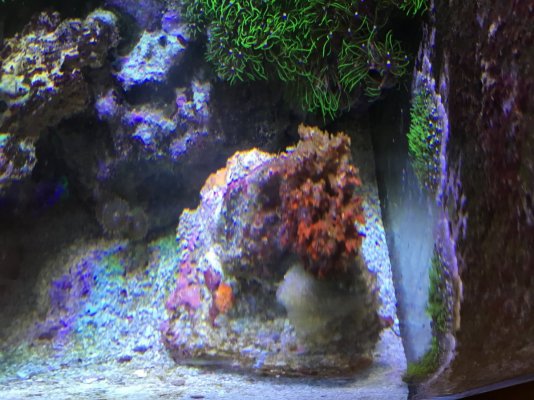Most of the early references will be from Russ Kronwetter, free guide on macroalgae: red, green and brown at Gulf Coast EcoSystem site live.plants.
Marine Plants in The Aquarium" is an online resource for the identification and care of marine macroalgae and seagrasses in the saltwater aquarium. The guide features over 70 of the most commonly available species of marine plants with full color photographs, detailed descriptions and aquarium care. Many of the species included in the guide are available to purchase online from Gulf Coast Ecosystems. Click on each link below to begin the exploration.
Table of Contents
About The Author Introduction Marine Plants In The Aquarium
The Refugium Substrates Selecting Quality Plants
Aquascapes Lighting Reproductive Cycle
Filtration Nutrients Maintenance
Case For Caulerpa Green Macroalgae Red Macroalgae
Brown Macroalgae Seagrass Mangroves
References Glossary Online Articles
RED MACROALGAE (RHODOPHYTA)
The genus Rhodophyta is the largest and most diverse group of tropical and temperate marine algae with more than 2,000 species worldwide. Their dominant pigment is phycoerythrin, which gives off rich shades of red, orange and blue. Red macro algae are some of the most varied and striking of all marine algae and are highly sought after as aquarium specimens. Identification can be difficult in some species, such as Gracilaria, and some have slight variations depending on the location and depth. Although this index is not a complete listing, it represents species that are commonly available or sought after by marine aquarists. As new species become available to the industry they will be added.
Botryocladia is a beautiful specimen that does very well in the marine aquarium. It features stiff, lightly calcified branches with bright red air bladders. It resembles a cluster of grapes and is sometimes referred to as Red Grape Caulerpa, although it is not a species of Caulerpa at all. Depending on the species, it can grow in rather large clumps attached to rocks and coral fragments in depths of up to 30 feet or more. It is very hardy and seems to do well in aquariums with good water quality and low to medium lighting. There are several varieties available in the aquarium trade, but identification can be difficult as they all have the same basic characteristics.
Scientific Name: Botryocladia Sp.
Common Name: Red Grape, Red Berries
Origin: Gulf of Mexico, Atlantic, Pacific
Depth Collected: 15-130 feet
Maximum Height : 18"
Growth Rate: Slow
Light: Moderate
Temperature: 78-84
Propagation: Fragmentation, sporulation
Difficulty: Easy
Food Value: Very palatable, is readily eaten by Tangs and other herbivores
Nutrient Uptake: Good
Flow Rate: Moderate
Marine Plants In The Aquarium: An online guide to the identification and care of marine plants and macroalgae in the aquarium.
An online guide to the identification and care of marine plants and macroalgae in the aquarium.
www.marineplantbook.com
Marine Plants in The Aquarium" is an online resource for the identification and care of marine macroalgae and seagrasses in the saltwater aquarium. The guide features over 70 of the most commonly available species of marine plants with full color photographs, detailed descriptions and aquarium care. Many of the species included in the guide are available to purchase online from Gulf Coast Ecosystems. Click on each link below to begin the exploration.
Table of Contents
About The Author Introduction Marine Plants In The Aquarium
The Refugium Substrates Selecting Quality Plants
Aquascapes Lighting Reproductive Cycle
Filtration Nutrients Maintenance
Case For Caulerpa Green Macroalgae Red Macroalgae
Brown Macroalgae Seagrass Mangroves
References Glossary Online Articles
RED MACROALGAE (RHODOPHYTA)
The genus Rhodophyta is the largest and most diverse group of tropical and temperate marine algae with more than 2,000 species worldwide. Their dominant pigment is phycoerythrin, which gives off rich shades of red, orange and blue. Red macro algae are some of the most varied and striking of all marine algae and are highly sought after as aquarium specimens. Identification can be difficult in some species, such as Gracilaria, and some have slight variations depending on the location and depth. Although this index is not a complete listing, it represents species that are commonly available or sought after by marine aquarists. As new species become available to the industry they will be added.
Botryocladia is a beautiful specimen that does very well in the marine aquarium. It features stiff, lightly calcified branches with bright red air bladders. It resembles a cluster of grapes and is sometimes referred to as Red Grape Caulerpa, although it is not a species of Caulerpa at all. Depending on the species, it can grow in rather large clumps attached to rocks and coral fragments in depths of up to 30 feet or more. It is very hardy and seems to do well in aquariums with good water quality and low to medium lighting. There are several varieties available in the aquarium trade, but identification can be difficult as they all have the same basic characteristics.
Scientific Name: Botryocladia Sp.
Common Name: Red Grape, Red Berries
Origin: Gulf of Mexico, Atlantic, Pacific
Depth Collected: 15-130 feet
Maximum Height : 18"
Growth Rate: Slow
Light: Moderate
Temperature: 78-84
Propagation: Fragmentation, sporulation
Difficulty: Easy
Food Value: Very palatable, is readily eaten by Tangs and other herbivores
Nutrient Uptake: Good
Flow Rate: Moderate
Last edited:




